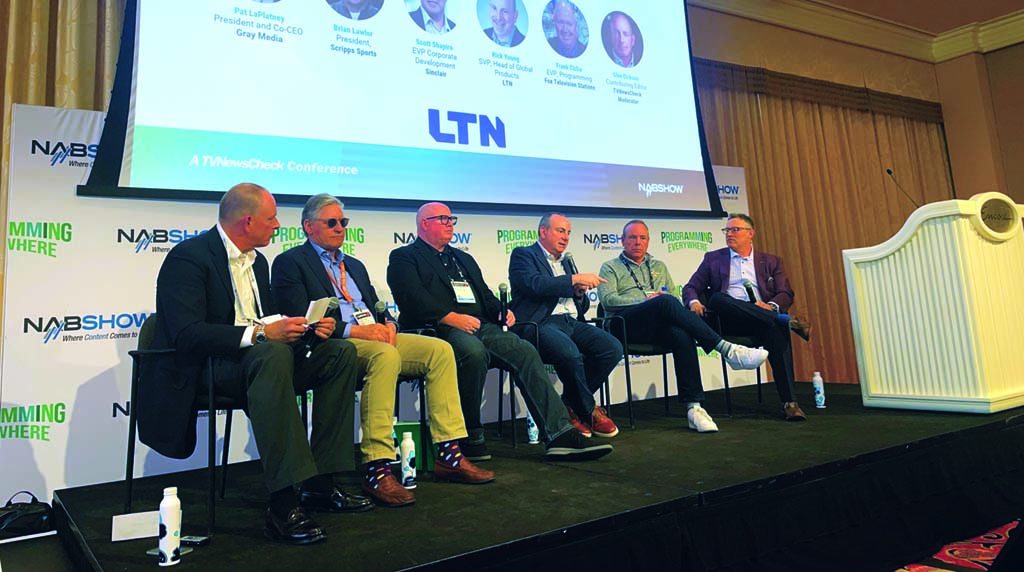2025 NAB Show: For Local Sports Rights, It's Déjà Vu All Over Again
As cable RSNs face troubles, broadcast is sports TV’s comeback kid

The sports rights landscape has changed enormously in recent years in part due to the events surrounding Diamond Sports Group. A formerly constricted market was set loose, opening sports rights deals to local broadcast, where they generally hadn’t been for ages. For the last few years, a fairly steady parade of deals have been announced between broadcasters and local professional teams, college leagues or even broader professional leagues like the WNBA.
“(Re) Building a Sports Business on Local Broadcast,” part of the Programming Everywhere Conference, provided a status report on the still-developing market, one that is potentially critical to local broadcast in general.
Glen Dickson, contributing editor of TVNewsCheck and the panel’s moderator, started by asking what stage the brave new world of sports broadcast rights was in.
“It’s the second inning,” said Brian Lawlor, president of Scripps Sports, picking up on a baseball metaphor. He said some of the first deals brought back to over-the-air broadcast are only a few years old. “It feels like it’s still very early; a lot of the teams that had been with regional sports networks (RSNs) for decades are sort of looking at the landscape, trying to figure out if over-the-air is a good platform for them.”
The panelists agreed that we’re still in the early innings — bottom of the second, top of the third. They generally agreed that sports need to cultivate new fans as they had done in the past, by being broadly available in mass media and broadcast. And teams have to adopt again to an ad-based model versus a distribution model.
Scott Shapiro, executive vice president of corporate development at Sinclair, said, “[With] the eyeballs definitely ahead of the monetization, it feels early with lots of opportunity and lots of risk.”
Ratings are generally very good, Lawlor said. “One of the reasons why we got into sports was because it drives some of the largest viewing of any genre. We’ve all seen the numbers from two years ago when 96 of the top 100 shows on TV were live sports. That plays itself out in local sports, too.”
Get the TV Tech Newsletter
The professional video industry's #1 source for news, trends and product and tech information. Sign up below.
Pat LaPlatney, president and co-CEO, Gray Television, concurred, noting an Atlanta Braves game that had 10 times the ratings of the comparable period in the past. “In terms of time period, there is no comparison, the numbers are huge compared to what we had in there.”
Shapiro said he had been generally impressed with the younger skew of broadcast viewers and mentioned cross-promotional tie-ins with local news. He described the future of streaming as “TBD for now,” though that opinion was not universal. Some of the panelists felt strongly about the complementary nature of streaming and linear.
Frank Cicha, executive vice president, programming, Fox Television Stations, said it was a pleasure to not be competing with teams as with the RSN model. “We say, ‘How do you want your brand?’ We’re letting the teams play a heavy role.”
Rick Young, senior vice president, head of global products, LTN, couldn’t say which inning this new world of local sports is in, but he said LTN has been working with many broadcasters since the start of metaphorical spring training. Live MC services can connect a main market with additional markets. “Sports is really valuable and fits customization.”
Copyright 2025 NAB

